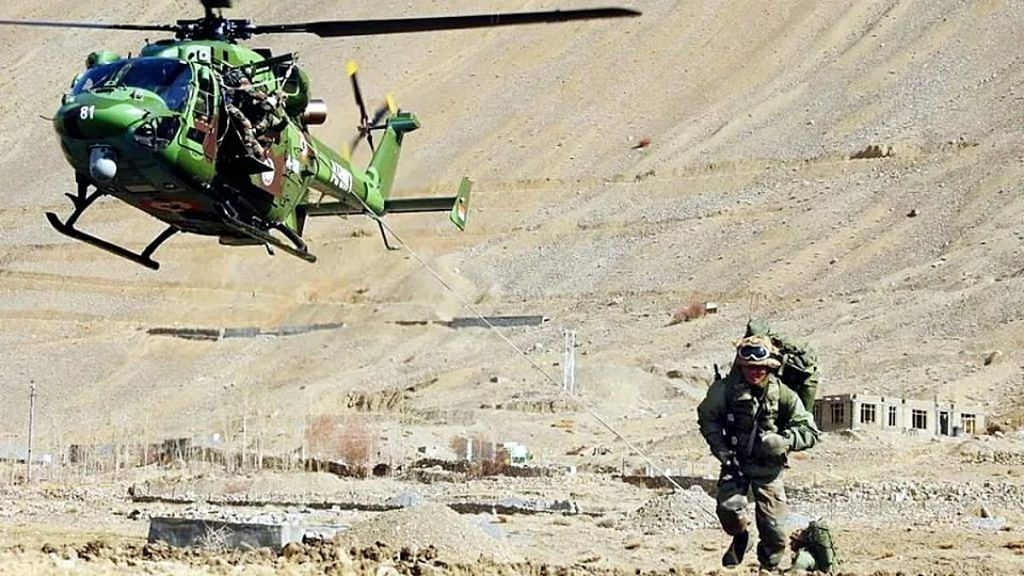New Delhi: With the Ladakh standoff having entered its third year now, top government sources have told ThePrint that India does not foresee fighting China again along the critical Line of Actual Control (LAC). However, they made it clear that if Beijing tries to reignite tensions, India will give a “muscular response” without worrying about the outcome.
“We don’t foresee any war or conflict like what happened in Galwan. India is a peace-loving country and wants good relations with all its neighbours including China,” a top government official told ThePrint when asked about speculation that the tensions could eventually result in conflict between the two countries in the coming months, or over the next few years.
Government sources said that the Chinese “have understood that India will stand up to any kind of aggression”, and will not back down if push comes to shove.
“In Galwan, we fought valiantly and caused casualties on the Chinese side. Yes, we suffered too, but the Chinese have realised that we will not back down,” the sources further said.
They also made it clear that India is in favour of solving the tensions through talks as it wants peaceful relations with all its neighbours, including China.
Asked what would happen if faced with conflict, the sources said, “Our soldiers are very determined. War is not fought just through weapons and systems but through the grit and determination of soldiers, which is very high on our side. If indeed there is a conflict, we will give a muscular response without worrying (about) what the outcome will be.”
Also Read: China’s Global Security Initiative — what it is, what Xi hopes to gain & what it means for India
Talks will be long-drawn
Talking about China’s ongoing military and diplomatic talks with India over the LAC issue, the sources said that these will continue for the foreseeable future.
They further said that while disengagement has taken place on both banks of Pangong Tso, Galwan and Gogra, the issues of the Depsang Plains and Demchok will linger on as they predate the current standoff.
ThePrint was the first to report way back in August 2020 that India-China tensions at Depsang Plains in Ladakh preceded the current stand-off by several months at least.
Government sources said that talks over the Depsang Plains will continue and the aim right now is to ensure restoration of the April 2020 status quo, with not just disengagement of troops but also overall de-escalation.
This would mean that both India and China will have to pull back over 40,000 additional soldiers who have been deployed near the LAC in Ladakh, and also dismantle all radar and surface to air missile sites and others built since April 2020.
Ladakh tensions have led to rethink on military strategy
Government sources said that the tensions with China have led to a rethink on military priorities, and an “all of nation” approach is being followed.
“The LAC tensions cannot be seen through only the prism of the military. It needs an all of nation approach and has much wider ramifications including diplomacy and economics,” they added.
The sources further said that a lot of emphasis is being put on modern technology and better border infrastructure.
This is something that was also echoed by Army Chief Gen Manoj Pande, who took over on 30 April.
In an interaction with a group of journalists last week, the army chief said that India’s stand-off with China along its northern border was his “utmost concern”.
Responding to ThePrint’s query on what steps India should take to tackle China, Gen Pande had then said, “The basic issue remains the resolution of the border. What we see is that China’s intent has been to keep the border issue alive. What we need as a country is a whole of nation approach and in the military domain, this is to prevent and counter any attempt to alter the status quo at the LAC.”
He also said he would like to assure everyone that the army has a robust posture along the LAC to deal with all kinds of challenges. He noted that his focus has been to bring more technology for intelligence, surveillance and reconnaissance abilities, as well as to build infrastructure to support operations and logistics.
(Edited by Gitanjali Das)
Also Read: Wang Yi’s India visit was China trying to return to diplomatic status quo, says MIT prof Fravel
